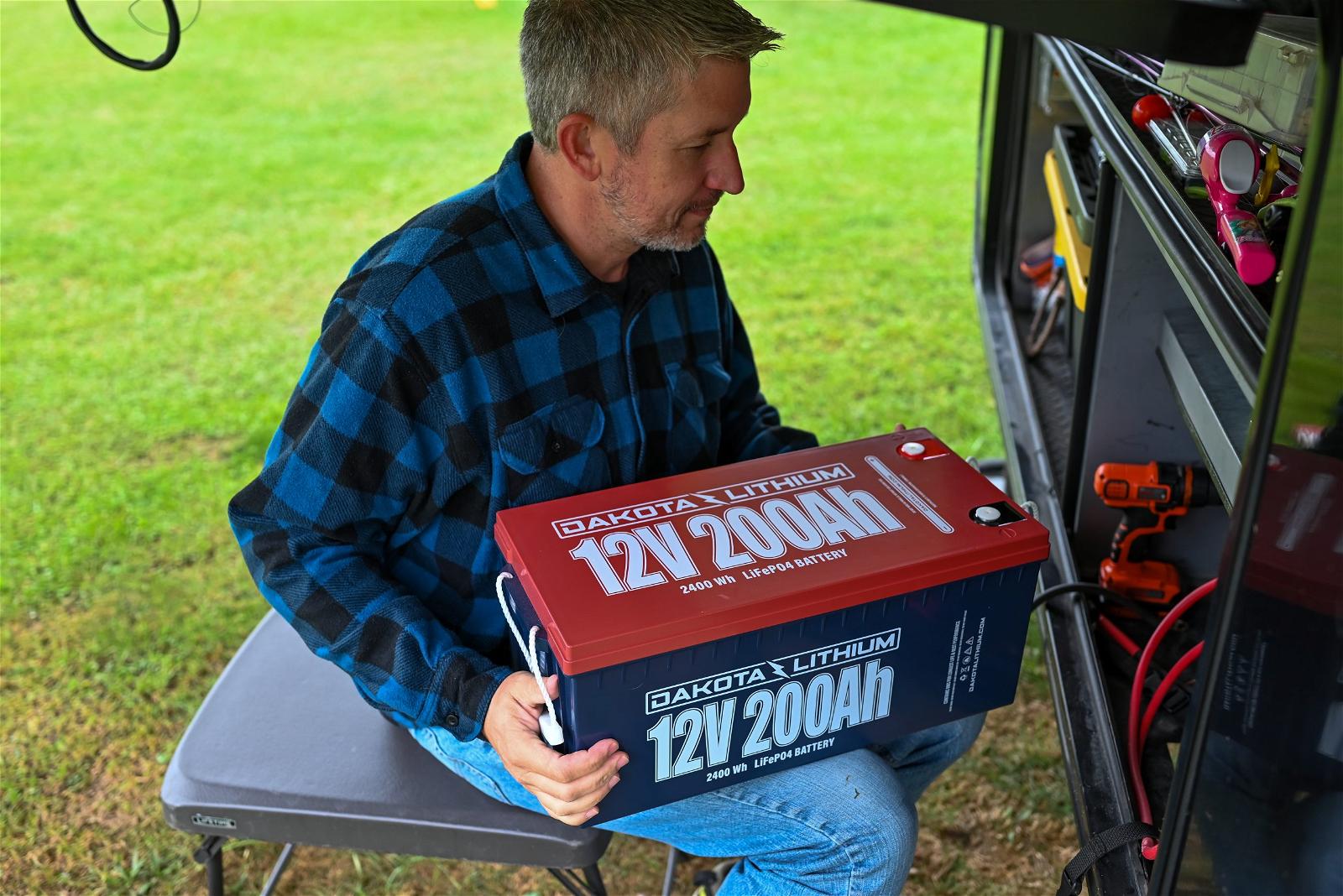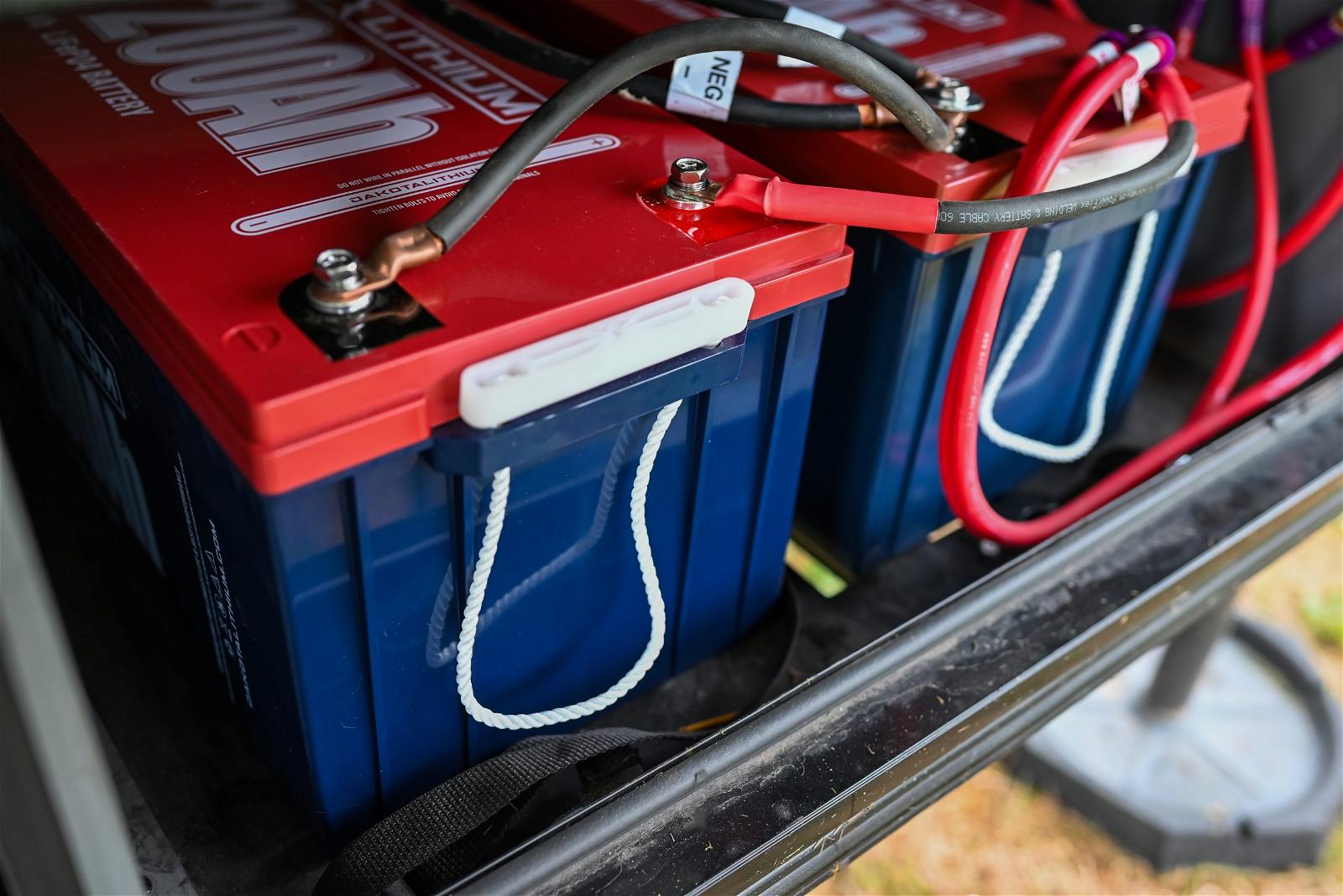When you first start to investigate solar power systems for your RV, there is a lot of information out there, and it can be a daunting and intimidating effort. How do you even hook up your solar panels to RV batteries? You can relax, it is quite simple. Luckily for you there are a lot of great companies that have excellent products to complete your solar power system.

Solar Panel Install- Chaos, Kiddos & Harmony
In the last few years, RVing has become increasingly more popular. The options of where to stay have become wide open for RVers. Not only do you have options to stay at RV Parks and RV Resorts, being off the grid or boondocking has become a more mainstream option and less scary. Many boondocking locations have one rule when you decide to stay for a night or two, they do not allow generators, we are seeing this more and more. A great solution is solar power systems, unlike gas powered generators, solar power a solar power system is just that, a system. It is more than just the 2 main components of batteries and panels. In fact, there are 5 basic components to a solar power system which is outlined below.

Solar panels are the capture source for the energy. Describing how it works, there are a number of fancy scientific works like “Photovoltaic”, but all you really need to know is this takes sunlight and converts it into electricity. One decision you will need to make is how big, or how many solar panels do you need to capture the electricity. The rule of thumb is the more solar panels you have the FASTER you can generate electricity. Keep in mind, if you have over 4 solar panels you will need to make sure you get a compatible charge controller.
A Charge controller does just what you think it does, it controls the way the system charges the batteries. It acts as a regulator to ensure the battery bank gets power it needs, in the speed it needs, and does not overcharge batteries. It has only one job and that is to regulate the voltage coming from the solar panels, which can fluctuate based on sunlight conditions. Overcharging or not charging correctly can greatly reduce the life of your batteries or even cause them to become unusable.
If you know anything about power, which I have to admit before we purchased our solar panel system, I knew very little about, there are 2 types of power, DC and AC. Power from the RV battery bank is a 12-volt DC power, the inverter converts this into a usable 120-volt AC power, that powers appliances like your fridge, TVs, and my favorite invention ever, my Keurig Coffee maker! Without this you can still have a solar power system, but it will only run lights, some fans, water pumps, a furnace or other items that use 12-volt DC power. Chances are you will need an inverter.
The transfer switch is a fancy name to switch between inverter power (solar power) and direct connect (known as it’s maritime name of “shore power”). This switch ensures that power is coming from one source and not both at any given time. The good news is, most of the time the inverter also includes a transfer switch, so additional components may not be needed.
The battery, or battery bank (more than one) is the storage source for the solar power system. Just like the batteries in your TV remote or kid’s toys, they store power and deliver it when you need it. The difference here is, depending on what you need power for, you need a lot more power than the TV remote. There are 3 main types of batteries: LifePO4 Lithium, AGM (Lead Acid), and Flooded Cell (Lead Acid). Most function the same way by storing the power from the system and releasing it when needed, but the true game changer is the LifePO4 Lithium technology. Dakota Lithium has become the leader in this technology, creating some incredible batteries for RVs.
From our own Personal Experiences
Speaking from experience, when we moved from our standard factory installed AGM batteries to Dakota Lithium LifePO4 Lithium batteries, are solar power system was instantly transformed. We went from being able to power our RV for less than 24 hours to 48-72 hours of power! One decision you will need to make is how much storage will you need? The rule of thumb here is the more storage (or battery bank capacity) you have the longer you can go without needing a recharge. Keep in mind, that most modern RVs with solar power systems will recharge your battery bank when connected to shore power, or even when in tow (with the 7-way standard connection). There are numerous calculators online that can help you determine your power needs.

Brittan Call – Dakota Lithium 12V 200Ah
Although the idea of a solar power system is not complex, installation can be depending on make/model/year of your RV. Many modern RVs are sold as “solar ready”. This is just a fancy word for ports, holes, cables, and types of seals that are in place to accept a solar power system. My advice is, if it is in your budget, let the professionals take care of getting your new power system up and running. This system requires knowledge of how RV electrical systems work and a good number of tools that you may or may not have in your toolbox.
If you are going all in, or you are a DIY type of person, below is for you. We will go through general step by step instructions that should be consistent across all types/sizes of solar power systems.
**IMPORTANT**
EACH RV model may have different electrical configuration. Solar power systems need to contain the same components; however, other configuration and setup steps may vary. If you are not 100% comfortable with electricity or have previous knowledge working with electricity, call your RV dealer or your local certified RV technician and let the pros handle it.
HOW TO HOOK UP SOLAR PANELS TO RV BATTERIES

Dakota Lithium Install – Chaos, Kiddos & Harmony
Being able to have a solar power system is a game changer. It opens up a freedom that you would otherwise not have. When looking at systems ask around and do your research. Batteries play an intricate role on how long you can stay and play in these remote locations. So remember, go with the best and level up on your boondocking ability. We highly recommend the Dakota Lithium LifePO4. Remember, how you hook your solar panels to your RV batteries matters.
Happy Adventuring,
Gwendolyn from Chaos Kiddos & Harmony